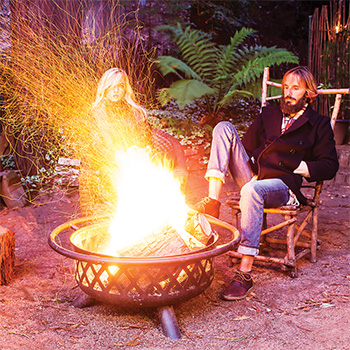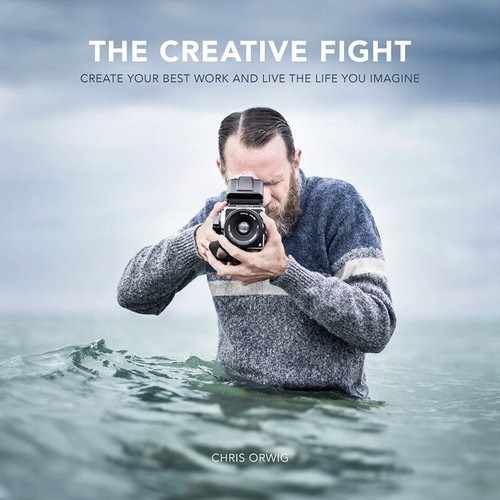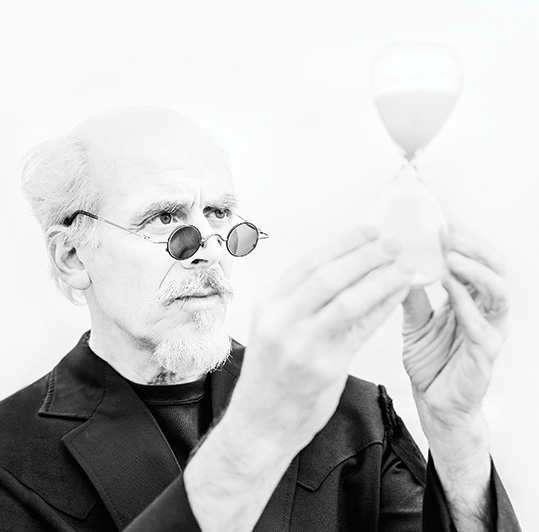Chapter Nineteen. Slow Is Fast

Over the last decade, I taught at a leading photography school. The school was expensive and rigorous, so by the time the students arrived, they weren’t trying to figure out what to do with their lives. Still, dozens of students dropped out in the first year. Why? These students had mistakenly fallen in love with the idea of being a photographer, without realizing that the journey was so tough. Pushing a button is easy, but crafting good photographs is hard. Like paddling across the sea, it takes consistent work. The students who quit wanted the result without the effort involved. The students who didn’t quit found that the journey was the reward. And my job was to help these students succeed. I had to teach them how to create photographs that would last. Because in the era of the instant, it’s the permanent that stands out from the crowd.
Slow Down to Accomplish More
Creating photographs that stand the test of time isn’t an easy thing to do. And most people can’t make photographs that last, because they are moving too fast. Worried about missing the moment, they take pictures at a furious pace. In photo circles we call this “spray and pray.” In other words, hold down the shutter and hope. It’s easy to do because digital is cheap and because photography is fun. Yet back in the days of film, it cost a quarter (25 cents) per click. That cost motivated aspiring photographers to learn their craft and to focus, concentrate, and compose in a more mindful way. Back then, success in photography wasn’t cheap.
In digital photography, you pay the price up front when you buy the gear. Mistakenly, some think that this entitles them to success. Whether your camera costs $1000 or $10,000, it doesn’t mean your pictures will be good. Making good pictures requires effort from us. So we shoot a lot of photographs to make up for our lack of skill. But just because you can shoot a lot doesn’t mean you should. But still we do. Why? Because less takes more time. Just like with writing letters, as Mark Twain described: “I didn’t have time to write a short letter, so I wrote a long one instead.” We don’t have (or we don’t take) the time to take better photographs, so we settle for good. We work quickly and hope for the best. The upside is that with digital we can work quickly and see instantly what we’ve done. The challenge is to maintain mindfulness so that we don’t get carried away with the speed. As with driving a race car, the more power the more mindfulness you need.
IN THE NAME OF GOD, STOP A MOMENT, CEASE YOUR WORK, LOOK AROUND YOU.
— LEO TOLSTOY
The downside of digital is that we shoot too much. The result is too many photographs, too much processing, and too much time searching for a good frame. That’s the problem for you, but there’s also an expense to everyone else. When you share too many photographs, it becomes dull. Even if the photographs are good, viewing too many makes us numb.
Creating photographs that last means we need to change our pace. Even Ansel Adams used to say, “Twelve significant photographs in a year is a good crop.” When you slow down and lower your expected output, you can become an artisan in your craft. The new constraint beckons you to compose in a more thoughtful way. So it is with generating creative work.
Whether or not you care about photography, the lesson stands true: slowing down can help you accomplish more. Creativity isn’t just about coming up with more ideas than everyone else; it’s about coming up with ideas that are good. In photography, the surest way to do that is to photograph something that matters to you. If you love nature, stop shooting in the studio and go for a hike. Search for that landscape that speaks to your soul. If you can create a photograph that means something to you there is a greater chance it will mean something to me. Good photography comes from within. This is true with every type of work, and it starts with you.
Burn
We all have a fire that burns inside. It’s that fire that “moves us forward, gives us momentum to our projects, and authenticity to your voice,” as David duChemin puts it. He should know—he’s been making the pursuit of this fire his full-time gig for years. duChemin is a photographer, best-selling author, and world traveler. When my own passion wanes, he is one of the people I call. Each time we talk, his message has been the same: “The authentic you is better than anything else. Stop trying to please everyone else. Trust your gut and be real.” It’s amazing how easy it is to forget such a simple truth. We all need people like David who can set us straight. Regardless of your work, you have to find out what makes you tick and pursue that work. The more you do, the better it is for yourself and for everyone else.


SLOW DOWN EVERYONE YOU’RE MOVING TOO FAST. FRAMES CAN’T CATCH YOU WHEN YOU’RE MOVING LIKE THAT.
— JACK JOHNSON
Exercise
STEP 1
Set out to capture some photographs, but do so in a mindful and thoughtful way.
Tread lightly, and only lift the camera to your eye when you are ready to compose.
Aim to capture just 12 photographs of a scene.
STEP 2
Take a few minutes to reflect on the following questions:
Who am I and what matters most?
How can I pursue those things in my work and life?
STEP 3
If your work seems empty, it might be your own fault. Purpose doesn’t come from someone else. The more “you” that you bring to your life, the more creative and alive you will become. So take a few moments to slow down and ask yourself how you can invest more of your authentic self into your work.

